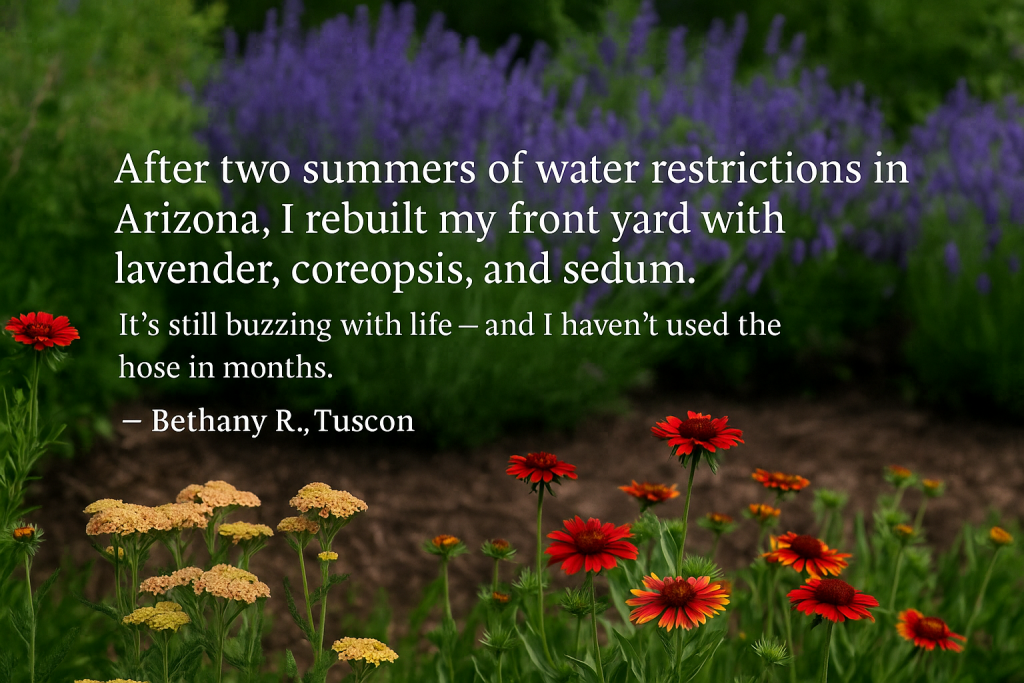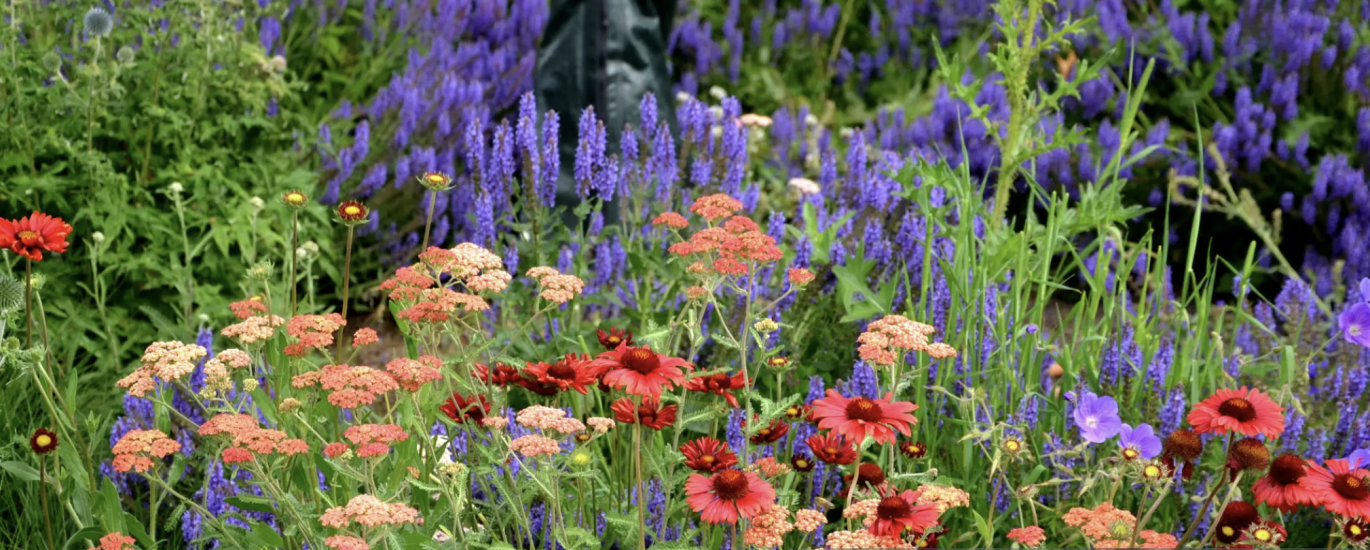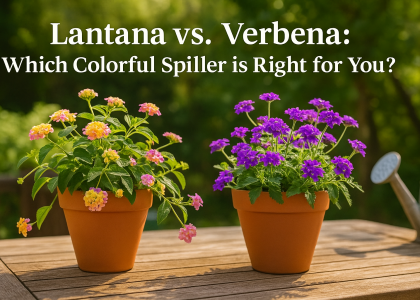Why Drought-Tolerant Gardening Matters
With rising temperatures, shrinking water reserves, and stricter watering bans in many regions, drought-tolerant gardening is more than a trend—it’s a climate-smart necessity.
Choosing low-water perennials helps:
- Conserve precious water
- Reduce irrigation costs
- Support native biodiversity
- Keep gardens lush during dry spells
Whether you’re gardening in USDA Zone 5 or Zone 10, these resilient plants are adaptable, beautiful, and sustainable.
What Makes a Plant Drought-Tolerant?
The best drought-tolerant perennials usually have:
- Deep or fibrous roots to access water efficiently
- Waxy, silver, or fuzzy leaves that reduce evaporation
- Native or Mediterranean origins suited to dry climates
- Low maintenance needs once established
Top 10 Drought-Tolerant Perennials (with Companion Ideas)
✔️ All plants listed are hardy in Zones 4–10 unless otherwise noted.
1. Lavender (Lavandula spp.)
- Zones: 5–9
- Best For: Borders, dry containers, pollinator gardens
- Why It Works: Aromatic, drought-loving, attracts bees
- Bonus: Deer-resistant and culinary uses
- Companion Plants: Rosemary, Russian Sage, Coneflower
2. Russian Sage (Perovskia atriplicifolia)
- Zones: 4–9
- Best For: Mass planting, dry backdrops
- Why It Works: Tall, airy spikes with bluish-purple flowers
- Bonus: Thrives in gravel and poor soils
- Companion Plants: Yarrow, Lavender, Sedum
3. Purple Coneflower (Echinacea)
- Zones: 3–9
- Best For: Native gardens, pollinator beds
- Why It Works: Thrives in full sun and poor soil
- Bonus: Seeds attract goldfinches in fall
- Companion Plants: Black-Eyed Susan, Bee Balm, Asters
4. Blanket Flower (Gaillardia spp.)
- Zones: 3–10
- Best For: Containers, front-of-border color
- Why It Works: Hot hues, long bloom period
- Bonus: Self-sows and reblooms reliably
- Companion Plants: Coreopsis, Sedum, Yarrow
5. Yarrow (Achillea millefolium)
- Zones: 3–9
- Best For: Meadows, wildflower mixes, cut flower beds
- Why It Works: Flat blooms for pollinators
- Bonus: Tolerates clay, sand, and drought equally well
- Companion Plants: Russian Sage, Coreopsis, Catmint
6. Black-Eyed Susan (Rudbeckia fulgida)
- Zones: 4–9
- Best For: Sunny flower beds, naturalized borders
- Why It Works: Bright, cheerful, self-reliant
- Bonus: Attracts butterflies & bees
- Companion Plants: Echinacea, Salvia, Grasses
7. Agastache (Hummingbird Mint)
- Zones: 5–10
- Best For: Xeriscapes, bee & hummingbird borders
- Why It Works: Heat-tolerant, scented foliage
- Bonus: Long bloom season
- Companion Plants: Penstemon, Gaura, Lavender
8. Salvia (Salvia nemorosa or greggii)
- Zones: 4–9
- Best For: Pollinator gardens, sunny edges
- Why It Works: Reblooming, drought-hardy
- Bonus: Deer and rabbit resistant
- Companion Plants: Echinacea, Catmint, Agastache
9. Sedum (Stonecrop)
- Zones: 3–9
- Best For: Rock gardens, green roofs
- Why It Works: Stores water in succulent leaves
- Bonus: 'Autumn Joy' blooms into fall
- Companion Plants: Sempervivum, Blanket Flower, Artemisia
10. Coreopsis (Tickseed)
- Zones: 4–10
- Best For: Mass planting, mixed perennials
- Why It Works: Self-seeding, heat-proof
- Bonus: Thrives on neglect
- Companion Plants: Gaillardia, Yarrow, Butterfly Weed
Water-Wise Design Tips
- Hydrozone: Group plants by water needs
- Mulch: Preserve moisture & suppress weeds
- Pathways: Use gravel or bark to reduce runoff
- Structure: Anchor beds with drought-hardy shrubs like Artemisia or Santolina
Soil Prep for Drought Defense
- Clay soil? Add grit or compost for better drainage
- Water deeply, less often to build root resilience
- Avoid over-fertilizing to keep growth compact and water-wise
A Gardener's Voice

Maintenance Plan: First 90 Days
- Week 1–2: Water every 2–3 days until settled
- Week 3–6: Water once weekly, check drainage
- Week 7–12: Taper to every 10–14 days
Use this phase to establish root depth and prepare plants for long-term self-sufficiency.
Download Your Free Printable Drought Garden Plan
Includes:
- Sun & part-shade layout templates
- Bloom calendar by season
- Spacing & pairings by zone
Pin & Share This Guide
Help others create sustainable gardens that bloom on less.
What's growing in your dry garden? Share your success story below.





